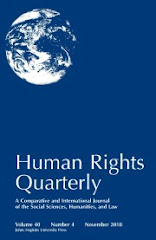Six years after the 9/11 attacks, U.S. policy concerning the detention of alleged terrorists remains legally uncertain and politically contested. Neither the criminal nor the military model in its traditional guise can easily meet the central legal challenge of modern terrorism: the legitimate preventive incapacitation of uniformless terrorists who have the capacity to inflict mass casualties and enormous economic harms and who thus must be stopped before they act. The traditional criminal model, with its demanding substantive and procedural requirements, is the most legitimate institution for long-term incapacitation. But it has difficulty achieving preventive incapacitation. Traditional military detention, by contrast, combines detention criteria and procedural flexibility that makes it relatively easy to incapacitate. But because the enemy in this war operates clandestinely, and because the war has no obvious end, this model runs an unusually high risk of erroneous long-term detentions, and thus in its traditional guise lacks adequate legitimacy.
The main goal of this essay is to show how the two systems have moved to rectify their inadequacies, and to some extent have converged on procedural and substantive criteria for detention. During the past five years the military detention system has instituted new rights and procedures designed to prevent erroneous detentions, and some courts have urged detention criteria more oriented toward individual conduct than was traditionally the case. At the same time, the criminal justice system has diminished some traditional procedural safeguards in terrorism trials, and has quietly established the capacity for convicting terrorists based on something very close to associational status. Each detention model, in short, has become more like the other.
Despite these changes, the post-convergence status quo may prove unsustainable with respect to military detention. Courts may mandate change. Congress may pursue reform as a matter of policy. Both may occur. The prospect of change, in any event, has given rise to a debate regarding the proper calibration of the non-criminal detention model. In hopes of informing that debate, we conclude by drawing on the lessons of convergence to identify the specific questions that would-be reformers must address with regard to both substantive detention criteria and procedural safeguards, highlighting the range of policy choices available and the extent to which the convergence process has paved the way toward consensus on at least some difficult issues.
Thursday, December 6, 2007
Chesney & Goldsmith: Terrorism and the Convergence of Criminal and Military Detention Models
Robert Chesney (Wake Forest Univ. - Law) & Jack Landman Goldsmith III (Harvard Univ. - Law) have posted Terrorism and the Convergence of Criminal and Military Detention Models (Stanford Law Review, forthcoming). Here's the abstract:





